 W
WIn the video-game industry, AAA is an informal classification used to categorise games produced and distributed by a mid-sized or major publisher, which typically have higher development and marketing budgets than other tiers of games.
 W
WAmazon Lumberyard is a now superseded freeware cross-platform game engine developed by Amazon and based on CryEngine, which was licensed from Crytek in 2015. In July 2021, Amazon and the Linux Foundation announced that parts of the engine would be used to create a new open source game engine called Open 3D Engine, which would replace it. A new Open 3D Foundation, run by the Linux Foundation will manage the new engine, which will be licensed under the open source Apache 2.0 license. The new engine is reportedly partially based on Lumberyard but with many parts rewritten, and is considered a new engine.
 W
WAtari 2600 homebrew is a term describing hobbyist-developed games for the Atari 2600 video game console. The first such game was written in 1995, and more than 100 have been released since then. The majority of games are unlicensed clones of games for other platforms, and many were written for the technical challenge. There are also ROM hacks and some original games. Several games have received attention outside the hobbyist community. Some have been included in a game anthology by Activision.
 W
WA Composer’s Guide to Game Music is a 2014 book written by Winifred Phillips, a video game composer with over 11 years experience creating music for such games as Assassin’s Creed Liberation, God of War and multiple games in the LittleBigPlanet franchise. Through the use of autobiographical anecdotes, scholarly discussion and practical advice, Phillips explores the creative and technical process of composing music for video games. The book was published by The MIT Press on February 14, 2014. The book has received many positive reviews and has won multiple awards.
 W
WA cover system is a video game gameplay mechanic that allows a virtual avatar to hide from and avoid dangers, usually in a three-dimensional world. This method is a digital adaptation of the real-life military tactic of taking cover behind obstacles, for purposes of attaining protection from enemy ranged or area effect attacks, such as gunfire or explosions.
 W
WDecima is a proprietary game engine made by Guerrilla Games and released in November 2013, that includes tools and features like artificial intelligence and game physics. It is compatible with 4K resolution and high-dynamic-range imaging used for games on the PlayStation 4, PlayStation 5, and Microsoft Windows.
 W
WIn first person video games, the field of view or field of vision is the extent of the observable game world that is seen on the display at any given moment. It is typically measured as an angle, although whether this angle is the horizontal, vertical, or diagonal component of the field of view varies from game to game.
 W
WA game client is a network client that connects an individual user to the main game server, used mainly in multiplayer video games. It collects data such as score, player status, position and movement from a single player and send it to the game server, which allows the server to collect each individual's data and show every player in game, whether it is an arena game on a smaller scale or a massive game with thousands of players on the same map. Even though the game server displays each player's information for every player in a game, players still have their own unique perspective from the information collected by the game client, so that every player's perspective of the game is different, even though the world for every player is the same. The game client also allows the information sharing among users. An example would be item exchange in many MMORPG games where a player exchange an item he/she doesn't want for an item he/she wants, the game clients interconnect with each other and allows the sharing of information, in this exchanging items. Since many games requires a centralized space for players to gather and a way for users to exchange their information, many game clients are a hybrid of client-server and peer-to-peer application structures.
 W
WA game design document is a highly descriptive living software design document of the design for a video game. A GDD is created and edited by the development team and it is primarily used in the video game industry to organize efforts within a development team. The document is created by the development team as result of collaboration between their designers, artists and programmers as a guiding vision which is used throughout the game development process. When a game is commissioned by a game publisher to the development team, the document must be created by the development team and it is often attached to the agreement between publisher and developer; the developer has to adhere to the GDD during game development process.
 W
WGame Design Expo is an annual event in Vancouver, British Columbia, Canada for video game industry professionals and enthusiasts, hosted by Vancouver Film School's Game Design program. The inaugural event in 2007 was the first of its kind in Vancouver. Game Design Expo has presented such industry speakers as Ron Gilbert and Eric Zimmerman, and designers and producers from companies like Bungie, Activision, Electronic Arts, BioWare, and Mythic Entertainment.
 W
WGame Developer magazine was the premier publication for working video game creators, originally started in March 1994 by Miller Freeman, Inc as quarterly, later bimonthly, and finally monthly. In each issue, industry leaders and experts shared technical solutions, reviewed new game development tools, and discussed strategies for creating innovative, successful video games. Monthly postmortems dissected the industry’s leading games, from AAA console to social and mobile games and beyond, and columns gave insight into deeper development practices from across all disciplines, from design, to programming, to art, to business, and audio. It was closed in 2013 as part of a restructuring at parent company UBM Tech that included the closing of all print publications owned by that company.
 W
WThe Game Developers Conference (GDC) is an annual conference for video game developers. The event includes an expo, networking events, and awards shows like the Game Developers Choice Awards and Independent Games Festival, and a variety of tutorials, lectures, and roundtables by industry professionals on game-related topics covering programming, design, audio, production, business and management, and visual arts.
 W
WA game engine is the core software component of a game. This terminology is similar to the term "software engine" used in the software industry.
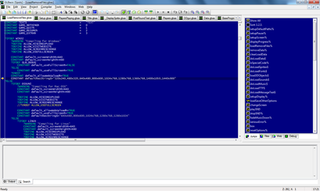 W
WGLBasic is a commercial BASIC programming language that can compile to various platforms including Windows, Linux, Mac OS X, and some handheld devices. The language is designed to be simple and intuitive.
 W
WThe Global Game Jam (GGJ) is an annual distributed game jam. Inspired by the Nordic Game Jam, and created by Susan Gold, Ian Schreiber, Gorm Lai and Foaad Khosmood, originally developed under the International Game Developers Association Education SIG to bring together the elements of creativity, collaboration and experimentation. At each site, participants gather to develop ideas, form small groups, create new, creative, innovative games, and present them to their peers and the global community, all in a limited time span. As of 2013, GGJ is managed by Global Game Jam Incorporated. Current and past board directors include the founders Elonka Dunin, Lindsay Grace and Zuraida Buter. In January 2019, GGJ generated teams in 860 sites in 113 countries, who over the course of one weekend created 9,010 games. The Global Game Jam carries a registered trademark.
 W
WThis is a list of titles for the Atari Jaguar and its CD add-on developed and released by independent developers and publishers. Many of the games present here have been released long after the end of the console's official life span in 1996, with the last officially licensed title released in 1998. Consequently, these homebrew games are not endorsed or licensed by Atari. After the properties of Atari Corporation were bought out by Hasbro Interactive in 1998, the rights and patents to the Jaguar were released into the public domain in 1999, declaring the console an open platform and opening the doors for homebrew development. Thanks to this, a few developers and publishers such as AtariAge, B&C Computervisions, Piko Interactive, Songbird Productions and Video61 continue to release previously unfinished games from the Jaguar's past life cycle, as well as new titles, to satisfy the system's cult following as of date.
 W
WMany games have been independently developed for the Dreamcast by independent developers. Most of these games were commercially released long after the end of the console's official life span in North America where production was ceased by end of 2001, although Sega of America still offered support and had some games scheduled for release and so games kept being released for quite some time still after first announcing the move to 3rd party Development, unlike 1st party titles of other regions like Puyo Puyo Fever being released in 2004 in Japan and a select few more in Europe, seeing as the Dreamcast was launched approximately 1.5 years later in Europe compared to Japan and 13 months later than North America, thus the last region the console was released on 20 October 2000. Meanwhile, in Japan, the console was released in November 1998, lasting with official support and console sales as well as hardware peripherals and games both developed and published by studios at Sega of Japan, from 1998 through 2007, almost giving the 6th generation console 10 years of official support in the region.
 W
WThis is a list of home computers, sorted alphanumerically, which lists all relevant details of their video hardware.
 W
WMagic Bytes LLC is an American software development company and video game publisher. It develops software for immersive experiences in Virtual Reality and Augmented Reality for education, entertainment and training simulation. The company was founded in 2017 by Thomas Meiertoberens, who originally introduced the label Magic Bytes in 1987 for publishing the first video game adaptions of comic characters Clever & Smart, Pink Panther and Tom & Jerry.
 W
WMode 7 is a graphics mode on the Super NES video game console that allows a background layer to be rotated and scaled on a scanline-by-scanline basis to create many different effects. The most famous of these effects is the application of a perspective effect on a background layer by scaling and rotating the background layer in this manner. This transforms the background layer into a two-dimensional horizontal texture-mapped plane that trades height for depth. Thus, an impression of three-dimensional graphics is achieved.
 W
WNordic Game Jam is an annual game jam that takes place in Copenhagen, created in 2006 by Gorm Lai and the Danish chapter of the International Game Developers Association in collaboration with Jesper Juul and Henriette Moos. It is one of the biggest videogame-related events in Denmark and one of the largest game jams in the world, with 900 participants as of 2016. Participants are given a theme or series of restrictions at the beginning of the event and are then given around 40 hours to make a game around those. In 2009 it served as the flagship game jam and inspiration for Global Game Jam. The 2013 edition of Nordic Game Jam was for the first time held at Aalborg University – Copenhagen.
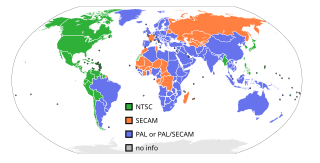 W
WNTSC-C is a regional lockout created in 2003 by Sony Computer Entertainment for the official launch of its PlayStation 2 gaming system into the mainland Chinese market.
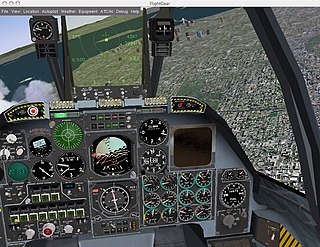 W
WAn open-source video game, or simply an open-source game, is a video game whose source code is open-source. They are often freely distributable and sometimes cross-platform compatible.
 W
WOpenGL is a cross-language, cross-platform application programming interface (API) for rendering 2D and 3D vector graphics. The API is typically used to interact with a graphics processing unit (GPU), to achieve hardware-accelerated rendering.
 W
WA physics engine is computer software that provides an approximate simulation of certain physical systems, such as rigid body dynamics, soft body dynamics, and fluid dynamics, of use in the domains of computer graphics, video games and film (CGI). Their main uses are in video games, in which case the simulations are in real-time. The term is sometimes used more generally to describe any software system for simulating physical phenomena, such as high-performance scientific simulation.
 W
WPhysX is an open-source realtime physics engine middleware SDK developed by Nvidia as a part of Nvidia GameWorks software suite.
 W
WRagdoll physics is a type of procedural animation used by physics engines, which is often used as a replacement for traditional static death animations in video games and animated films.
 W
WRaylib is a cross-platform open-source software development library. The library is meant to create graphical applications and games. The official website introduces it as "a simple and easy-to-use library to enjoy video games programming."
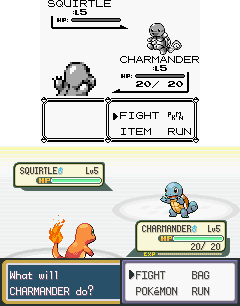 W
WA video game remake is a video game closely adapted from an earlier title, usually for the purpose of modernizing a game with updated graphics for newer hardware and gameplay for contemporary audiences. Typically, a remake of such game software shares essentially the same title, fundamental gameplay concepts, and core story elements of the original game. However, some aspects of the original game may have been changed.
 W
WThe Russian Game Developers' Conference, or KRI, was an annual event for industry professionals devoted to game development, publishing and distribution in Russia and surrounding territories. The show also featured the presentation of the annual KRI awards, a professional game awards. Attendance at KRI was relatively compared with some of the better-known game developer conferences abroad. However, this was mainly attributed to the population densities in the enormous geographic range that the conference covered and the difficulties in transportation. Back then Russian distribution video game networks were often plagued by software pirates. Due to the spread of digital distribution and the adoption Russian anti-piracy legislation, KRI grew each year, having been able to provide accommodation for attendants from afar. KRI also helped to establish and entrench various anti-piracy measures.
 W
WSimple and Fast Multimedia Library (SFML) is a cross-platform software development library designed to provide a simple application programming interface (API) to various multimedia components in computers. It is written in C++ with bindings available for Ada, C, Crystal, D, Euphoria, Go, Java, Julia, .NET, Nim, OCaml, Python, Ruby, and Rust. Experimental mobile ports were made available for Android and iOS with the release of SFML 2.2.
 W
WSimple DirectMedia Layer (SDL) is a cross-platform software development library designed to provide a hardware abstraction layer for computer multimedia hardware components. Software developers can use it to write high-performance computer games and other multimedia applications that can run on many operating systems such as Android, iOS, Linux, macOS, and Windows.
 W
WSoft-body dynamics is a field of computer graphics that focuses on visually realistic physical simulations of the motion and properties of deformable objects. The applications are mostly in video games and films. Unlike in simulation of rigid bodies, the shape of soft bodies can change, meaning that the relative distance of two points on the object is not fixed. While the relative distances of points are not fixed, the body is expected to retain its shape to some degree. The scope of soft body dynamics is quite broad, including simulation of soft organic materials such as muscle, fat, hair and vegetation, as well as other deformable materials such as clothing and fabric. Generally, these methods only provide visually plausible emulations rather than accurate scientific/engineering simulations, though there is some crossover with scientific methods, particularly in the case of finite element simulations. Several physics engines currently provide software for soft-body simulation.
 W
WA video game clone is either a video game or video game console very similar to, or heavily inspired by, a previous popular game or console. Clones are typically made to take financial advantage of the popularity of the cloned game or system, but clones may also result from earnest attempts to create homages or expand on gameplay ideas presented in the original game. Legally, video game clones are not generally considered to be copyright infringement as gameplay elements are broadly uncopyrightable, an essential factor for creative development of new games based on past ideas. More recent case law has identified that game developers can protect their games' look and feel from clones, while methods like patents, trademarks, and industry regulation also help to fend off clones.
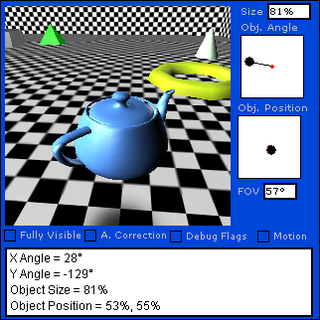 W
WIn 3D video games, a virtual camera system aims at controlling a camera or a set of cameras to display a view of a 3D virtual world. Camera systems are used in video games where their purpose is to show the action at the best possible angle; more generally, they are used in 3D virtual worlds when a third person view is required.